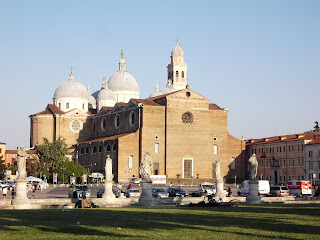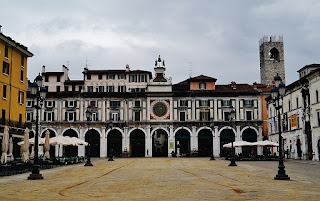Patriotic revolutionary took notes during historic expedition with Garibaldi
 |
| Abba as a young man in the uniform of Garibaldi's army |
Abba took part in most of the battles that led to the dissolution of the Kingdom of the Two Sicilies and he made notes during the 1860 campaign.
His major work, Noterelle d’Uno dei Mille was published in 1880, thanks to a recommendation by Giosuè Carducci, the Italian writer and poet who won a Nobel prize in Literature.
While attending a college in Liguria, Abba became enthusiastic about the work of patriotic romantic poets and writers such as Ugo Foscolo, Giovanni Prati, and Aleardo Aleardi. He went on to study at the Academy of Fine Arts in Genoa, but left in 1859 to voluntarily enrol in a cavalry regiment in Pinerolo, a comune - municipality - of Turin.
The following year he moved to Parma where he joined up with Garibaldi and his volunteers.
The literary career he was to follow later was inspired by his memories of his revolutionary experiences during the campaign to unite Italy.
He left Liguria for Sicily, where he had a baptism of fire fighting in the Battle of Calatafimi. He also played his part in the taking of Palermo and earned himself an honourable mention in the Battle of Volturno.
Afterwards, he retired to live as a civilian in Pisa and then later moved back to his native town in Liguria, where he was elected as mayor.
Abba’s first attempt at writing was a romantic poem in five canti under the title, Arrigo. Then, as a keen follower of the novelist Alessandro Manzoni, he embarked on an historical novel, Le rive della Bormida nel 1794 - The Banks of the Bormida in 1794 - which used ideas from the notes he had taken during the 1860 Spedizione dei Mille - the Expedition of the Thousand.
.jpg) |
| Abba pictured around the time his Notorelle were published |
Yet Abba’s magnum opus may never have been published had it not been for the support of Giosuè Carducci. One of Abba’s former revolutionary compatriots had urged him to send his manuscript to Carducci who was considering writing a book about the life of Garibaldi and had been encouraging survivors of the campaign to send him their historical testimonies.
After Carducci had read Abba’s work, he passed it on to the publishers, Zanichelli, because he regarded it so highly. He also told Abba that he might not now go ahead with his own biography of the Italian hero, Garibaldi.
Abba became famous after the publication of his Noterelle. He went on to write a Life of Nino Bixio, the soldier who helped to organise Giuseppe Garibaldi’s Expedition of the Thousand, and took part in the capture of Rome in 1870, which completed the unification process for Italy.
He also wrote a History of the Thousand and other works based on his experiences with Garibaldi, and some poetry and short stories. But none of his other books became as popular as his Noterelle.
In later life, he was appointed first teacher at the secondary school in Faenza in Emilia-Romagna and principal of the technological institute of Brescia in Lombardy.
Abba was nominated as a senator in June 1910, but he died in Brescia in November 1910 at the age of 72 and was laid to rest in the cemetery at Cairo Montenotte.
A commemorative plaque to Abba can be seen on a wall of the Palazzo Martinengo Colleoni di Pianezza in Corso Matteotti in Brescia, while the Italian destroyer Giuseppe Cesare Abba was named in his honour.
 |
| Porta Soprana, one of the ancient gateways into Cairo Montenotte |
Cairo Montenotte, where Abba was born and is buried, is a comune in the province of Savona in Liguria, located about 50km (31 miles) west of Genoa and 20km (12 miles) northwest of Savona. Archaeological finds indicate that Cairo Montenotte - which now has a population of around 12,500 - was inhabited in the Neolithic age and was conquered by the Romans more than 100 years before the birth of Christ. Roman artefacts and the remains of a villa from the Imperial period have been found there. The name Cairo is thought to have come from the ancient Ligurian word Carium, which is used to refer to the comune in a document from the tenth century. There is a legend that Francis of Assisi went through the town in the 13th century on his way to Spain but there is no evidence for this. King Victor Emmanuel II authorised Cairo to add Montenotte to its name in memory of a 1796 battle fought there, with a royal decree issued in 1863. Among the many interesting sites in the comune are a ruined castle and Porta Soprana, with its 15th century quadrangular tower.
Find accommodation in Cairo Montenotte with Expedia
 |
| Piazza della Loggia, the elegant square at the heart of the beautiful Lombardy city of Brescia |
Brescia, where Abba taught in later life and died in 1910, is the second city in Lombardy, after Milan, and has Roman remains and well-preserved Renaissance buildings. Brescia became a Roman colony before the birth of Christ and you can still see remains from the forum, theatre, and a temple. The town was fought over by different rulers in the middle ages but came under the protection of Venice in the 15th century. There is a distinct Venetian influence in the architecture of the Piazza della Loggia, an elegant square in the centre of the town, which has a clock tower similar to the one in Saint Mark’s square in Venice. Next to the 17th century Duomo is an older cathedral, the unusually shaped Duomo Vecchio, also known as la Rotonda, which is open to the public. The Santa Giulia Museo covers more than 3,000 years of Brescia’s history, housed within the Benedictine Nunnery of San Salvatore and Santa Giulia in Via Musei. The nunnery was built over a Roman residential quarter, but some of the houses, with their original mosaics and frescoes, have now been excavated and can be seen by visitors looking round the museum.
Brescia hotels from Hotels.com
More reading:
The Expedition of the Thousand and what it achieved
Victory at the Battle of Calatafimi
Nino Bixio - the patriotic general who helped unite Italy
Also on this day:
1888: The birth of wartime nurse Saint Maria Bertilla Boscardin
1935: The birth of champion wrestler Bruno Sammartino
1943: The birth of football coach Ottavio Bianchi
1943: The massacre of civilians in Lanciano, Abruzzo














_2.jpg)


.jpg)
%20(2).jpg)
.jpg)
.png)
.jpg)
.jpg)

_13.jpg)



.jpg)




